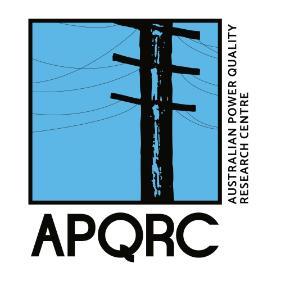About the Project
- Most of the appliances tested exhibited only temporary power cessation during disturbances before resuming normal operation once the disturbances were cleared. However, inverter-based air conditioners disconnected after voltage sag events.
- Appliances with inverter-based interfaces, such as refrigerators and air conditioners, rode through disturbances which caused their traditional (DOL) counterparts to stall. This suggests that they should be included in the Electronic Load element of the load model instead of being represented separately.
- Electronic loads remained unaffected by frequency disturbances, except for the inverter-based microwave oven. The operation of most tested loads remained unaffected by phase angle jump disturbances, except for the DOL motor-based refrigerator and air conditioner.
- Similar to the DER inverter tests, testing multiple devices of the same type provides additional insights in their operation and modelling requirements.
- Many small residential EV chargers comprise electrical contactors, communication and control elements but lack active power electronics. The response of the EV charger to a grid disturbance will depend on the response of the EV onboard power electronics as well as any additional behaviour (e.g., internal tripping) of the EV charger itself.
Sophisticated composite load models have been developed to accurately represent the dynamic and static responses of loads to various electrical disturbances. These models account for diverse load behaviour, including sensitivity to voltage changes and frequency fluctuations. The Western Electricity Coordinating Council (WECC) has introduced an advanced composite load model, known as CMPLDW, which encompasses various components such as different types of motor loads, electronic/static loads, and the inclusion of Distributed Energy Resources (DERs), providing a comprehensive framework for modelling modern power systems.
The CMPLDW model incorporates a variety of motor and load types, each with unique characteristics:
- Motor A: High locked-rotor torque, low inertia 3-phase induction motors, used in air conditioning compressors and refrigeration systems.
- Motor B: 3-phase induction motors with high inertia , driving loads with torque proportional to speed squared, found in ventilation fans and air-handling systems (4 to 19 kW).
- Motor C: Low inertia 3-phase induction motors for loads with torque proportional to speed squared, used in water circulation pumps (4 to 19 kW).
- Motor D: Single-phase compressors with constant torque load characteristic and minimal inertia, prone to stalling, used in residential and light commercial refrigerators (2 to 4 kW).
- Power Electronic Loads: Include electronic devices and appliances such as computers, televisions, dishwashers, office equipment, and variable frequency drives (VFDs) in commercial and industrial settings.
- Static Loads: Represents the aggregate of unclassified loads, including constant impedance loads such as incandescent lighting.




